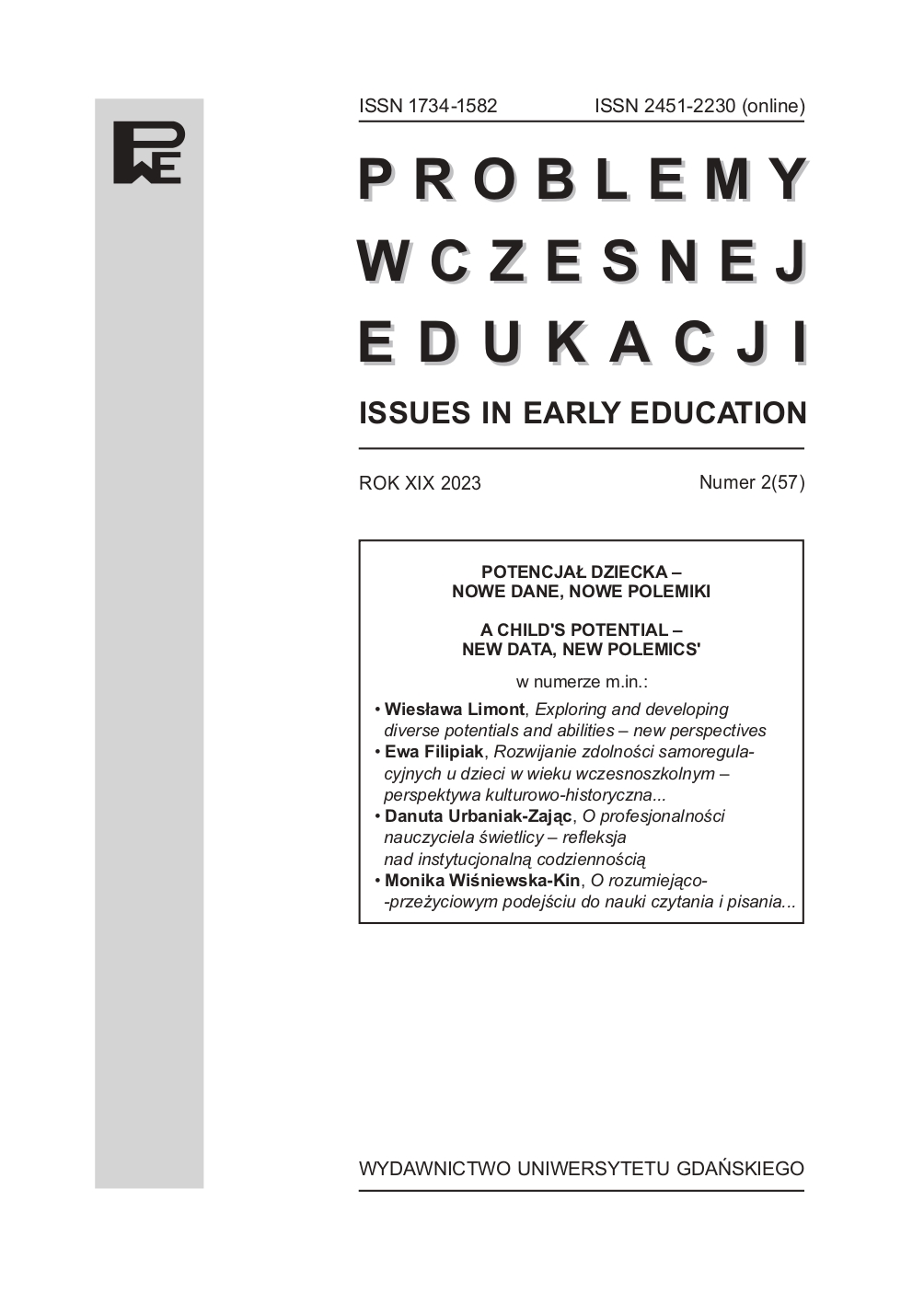What is the area of a pig? Problem posing and problem solving in early childhood education
DOI:
https://doi.org/10.26881/pwe.2023.57.09Słowa kluczowe:
uczenie dialogujące, matematyczna edukacja wczesnoszkolna, formułowanie problemów, rozwiązywanie problemówAbstrakt
Problem posing and problem solving serve as a crucial element of classroom instruction in early mathematics education, and have long been a topic of study of many practitioners and researchers. Used as a powerful tool for differentiation, they affect the ways in which the practice of mathematics is perceived by students and also help teachers gauge children’s understanding of concepts. In the student-centered approach, problem posing and problem solving can successfully engage students in creative educational situations. This research has been part of a broader design research project, the aim of which was to investigate the relationship between a classroom environment that allows for dialogue and young children’s propensity to design and solve their own tasks. Methodology included taking field notes and photographs, followed by reflection sessions. Turning young mathematicians into independent inquirers helped them gain authentic ownership of their knowledge. Additionally, it aided in the development of the young children’s competencies in effective engagement in problem posing activities. The toolbox of instructional techniques for problem posing in the classroom evolved, transforming mathematical classrooms into inquiry polygons for all learners.

 Uniwersyteckie Czasopisma Naukowe
Uniwersyteckie Czasopisma Naukowe





